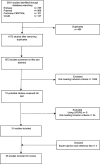Paratonia in Dementia: A Systematic Review
- PMID: 33185600
- PMCID: PMC7836054
- DOI: 10.3233/JAD-200691
Paratonia in Dementia: A Systematic Review
Abstract
Background: Paratonia is a dementia-induced motor abnormality. Although paratonia affects virtually all people with dementia, it is not well known among clinicians and researchers.
Objective: The aim of this study was to perform a systematic review of the literature on the definition, pathogenesis, diagnosis, and intervention of paratonia as well as to propose a research agenda for paratonia.
Methods: In this systematic review, the Embase, PubMed, CINAHL, and Cochrane CENTRAL databases were searched for articles published prior to December 2019. Two independent reviewers performed data extraction and assessed the risk of bias of the studies. The following data were extracted: first author, year of publication, study design, study population, diagnosis, assessment, pathogenesis, therapy and interventions.
Results: Thirty-five studies met the inclusion criteria and were included. Most studies included in the review mention clinical criteria for paratonia. Additionally, pathogenesis, method of assessment, diagnosis, and paratonia severity as are interventions to address paratonia are also discussed.
Conclusion: This systematic review outlines what is currently known about paratonia, as well as discusses the preliminary research on the underlying mechanisms of paratonia. Although paratonia has obvious devastating impacts on health and quality of life, the amount of research to date has been limited. In the last decade, there appears to have been increased research on paratonia, which hopefully will increase the momentum to further advance the field.
Keywords: Dementia; motor disorders; motor skills disorders; paratonia; systematic review.
Conflict of interest statement
Authors’ disclosures available online (
Figures



References
-
- American Psychiatric Association (2013) Diagnostic and statistical manual of mental disorders (DSM-5), Washington, DC.
-
- Dumurgier J, Artaud F, Touraine C, Rouaud O, Tavernier B, Dufouil C, Singh-Manoux A, Tzourio C, Elbaz A (2017) Gait speed and decline in gait speed as predictors of incident dementia. J Gerontol A Biol Sci Med Sci 72, 655–661. - PubMed
-
- Mc Ardle R, Morris R, Wilson J, Galna B, Thomas AJ, Rochester L (2017) What can quantitative gait analysis tell us about dementia and its subtypes? A structured review. J Alzheimers Dis 60, 1295–1312. - PubMed
Publication types
MeSH terms
LinkOut - more resources
Full Text Sources
Medical
Miscellaneous

